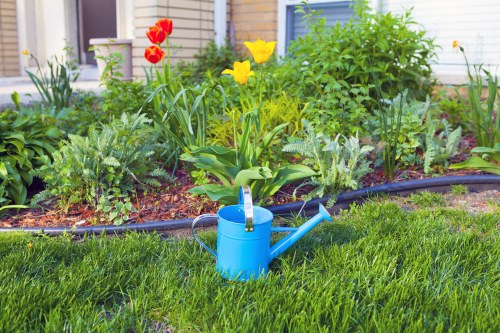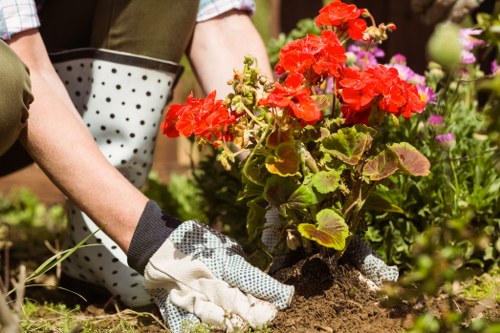Enhancing Your Garden Fence Replacement with the Right Hedge Trimmer
Introduction to Garden Fence Replacement

Replacing a garden fence is a significant project that can transform the aesthetics and functionality of your outdoor space. Whether you're aiming for better security, privacy, or simply a fresh look, understanding the tools and techniques involved is crucial.
One tool that often gets overlooked in fence replacement projects is the hedge trimmer. While primarily designed for maintaining hedges and shrubs, a hedge trimmer can play a pivotal role in preparing your garden area for a new fence installation.
In this article, we'll explore how integrating a hedge trimmer into your garden fence replacement project can enhance efficiency, improve the final outcome, and save you time and effort.
The Role of a Hedge Trimmer in Fence Replacement

A hedge trimmer is a versatile tool that offers more than just hedge maintenance. When undertaking a garden fence replacement, it can help in various stages of the project, ensuring that your garden is well-prepared and that the installation process goes smoothly.
Here are several ways a hedge trimmer can assist in your fence replacement:
- Cleaning the Area: Removing overgrown vegetation around the fence area ensures a clear workspace.
- Shaping the Garden: Properly trimmed hedges and shrubs can enhance the visual appeal of your new fence.
- Preventing Damage: Keeping plants away from fence posts reduces the risk of future damage or obstructions.
By incorporating a hedge trimmer into your toolkit, you can achieve a more organized and aesthetically pleasing garden setup.
Choosing the Right Hedge Trimmer

Selecting the appropriate hedge trimmer is essential for the success of your fence replacement project. There are various types of hedge trimmers available, each with its own set of features and benefits.
Types of Hedge Trimmers
- Electric Hedge Trimmers: Ideal for small to medium-sized gardens, they are easy to use and maintain.
- Gas-Powered Hedge Trimmers: Suitable for larger gardens with thick and dense vegetation.
- Battery-Powered Hedge Trimmers: Offer the convenience of cordless operation with sufficient power for most tasks.
Consider the size of your garden, the type of vegetation, and your budget when selecting a hedge trimmer.
Preparing Your Garden for Fence Replacement

Before you begin the fence replacement process, it's essential to prepare your garden adequately. This preparation ensures that the new fence is installed correctly and functions as intended.
Steps to Prepare Your Garden
- Clear the Area: Use a hedge trimmer to remove any overgrown plants, shrubs, or hedges around the fence perimeter.
- Trim for Accessibility: Ensure that there is enough space around the fence line for tools and materials during installation.
- Shape the Vegetation: Properly trimmed and shaped plants enhance the overall appearance of your garden and complement the new fence.
Taking these steps will create a clean and organized environment, making the fence replacement process more efficient.
Installing the New Garden Fence

With your garden prepared, it's time to move on to the actual installation of the new fence. The following guide outlines the essential steps to ensure a successful replacement.
Installation Steps
- Measure and Mark: Determine the exact placement of your fence and mark the locations for the posts.
- Digging Post Holes: Use appropriate tools to dig holes for the fence posts, ensuring they are deep enough for stability.
- Setting the Posts: Place the posts in the holes, checking for vertical alignment, and fill with concrete for added strength.
- Attaching Fence Panels: Once the posts are set, attach the fence panels securely.
- Finishing Touches: Trim any excess vegetation around the new fence to complete the project.
Following these steps meticulously will result in a sturdy and visually appealing garden fence.
Maintenance Tips for Your New Fence
After successfully replacing your garden fence, it's important to maintain both the fence and the surrounding vegetation to ensure longevity and continued aesthetics.
Regular maintenance includes:
- Periodic Trimming: Use your hedge trimmer to keep plants away from the fence, preventing damage and overgrowth.
- Cleaning: Remove debris and dirt from the fence to maintain its appearance.
- Inspecting for Damage: Regularly check the fence for any signs of wear or damage and address them promptly.
Consistent maintenance will keep your garden and fence looking pristine year-round.
Ready to transform your garden? Contact us today to get started on your fence replacement project with the right tools and expert guidance!